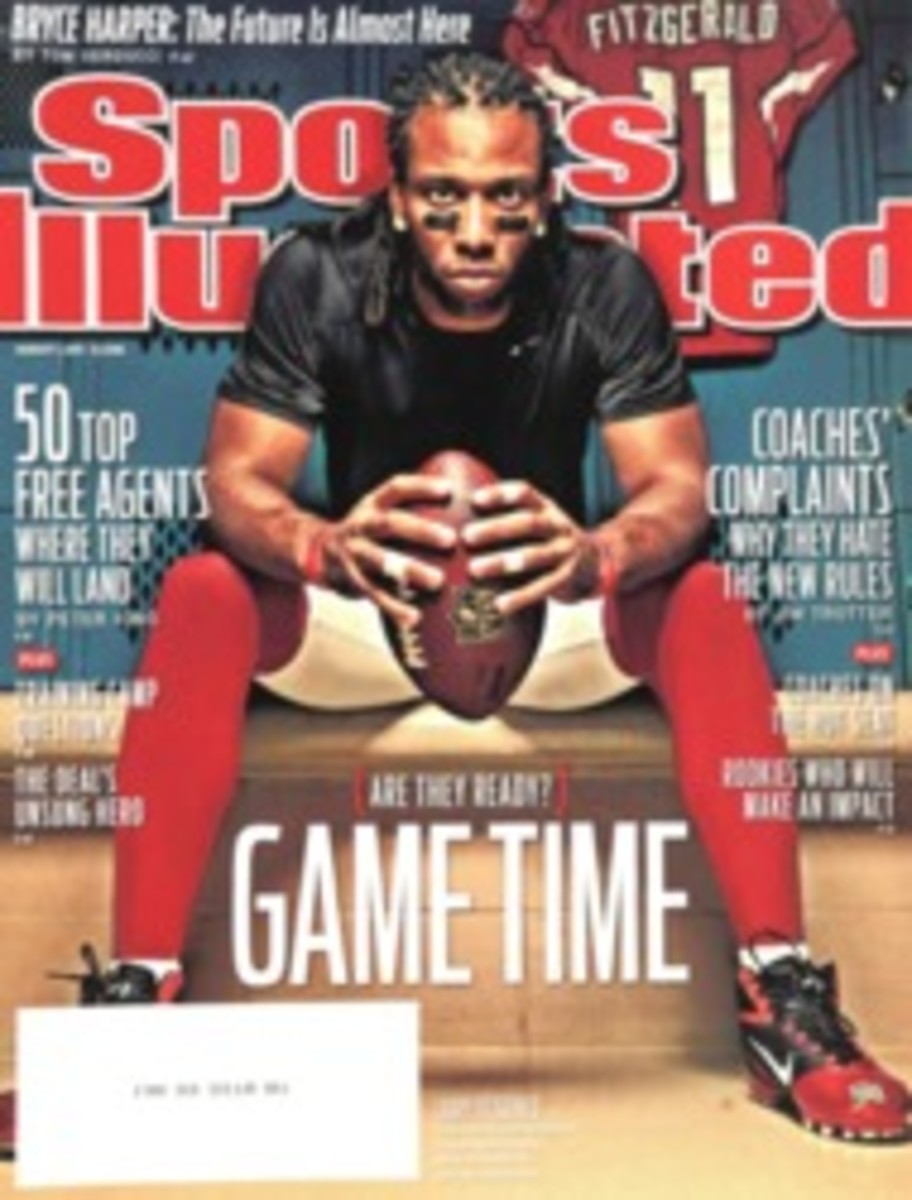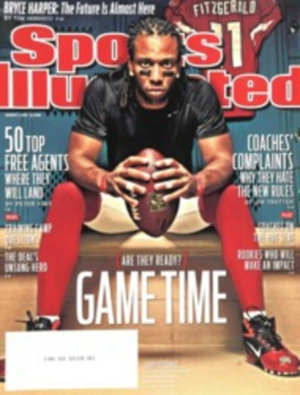
What's Taking So Long?
I don't care if I never get back"—and a good thing too, the way some baseball games are played. Yes, one of the game's charms is that it is played without a clock, but there are times when it occurs to me that baseball could use a calendar.
Even with the marked reduction in scoring in recent years—about 8.4 runs per game this season compared with 9.7 in 2006—the average game today takes 2:50 and runs about 20 minutes longer than 30 years ago.
Why? Here's a lineup of reasons.
• Longer commercial breaks during nationally televised games that add eight minutes or more.
• The shrunken strike zone, which—in a reversal of the courtship rules of the 1950s—allows nothing above the waist, leading to longer at bats.
• The ascendancy of on-base percentage, which has made walks count at contract time and convinced batters that it serves to stand and wait. There are 22 more pitches per game now than there were in '88, the first year the stat was measured.
• Prolonged conferences among pitching coach, pitcher, catcher and infielder, and the increased frequency of pitching changes.
• And most notably, the pas de deux between pitcher and batter: the batter stepping out after each pitch to adjust clothing and equipment, the pitcher seemingly loath to let go of the ball.
If you're any kind of baseball fan, this is familiar ground. But I kept wondering: How did the players of another era finish their games so much faster? I wanted to go back in time, watch a game from start to finish, stopwatch in hand, and find the answer.
I found a DVD of the Oct. 4, 1981, game between the Brewers and the Tigers. It was neither a slugfest nor a pitchers' duel but rather a 3--2 game with plenty of action: 20 hits, 14 runners left on base, six pitchers used. The game ran two hours, 19 minutes—and the reasons why were clear from the first minutes. In the bottom of the first, future Hall of Famer Paul Molitor came to the plate against Detroit's Milt Wilcox. Not once did Molitor step out of the batter's box. He saw seven pitches before grounding out, and the gap between each went like this: 10 seconds, then 8, then 10, then 6, then 7, then 8, then 7.
In the top of the second I saw something that made me wonder if I was watching the game at the wrong speed. Brewers starter Randy Lerch gave up a double to Tom Brookens. Surely now, with a runner in scoring position, Lerch would bear down and pitch at a slower pace. But for the rest of the inning he never took more than 12 seconds to deliver a pitch.
(In fact, 12 seconds is the maximum allowed a pitcher these days when no one is on base. Next time you're at a game, count how often that rule is enforced.)
Some hitters wore batting gloves, but not one called time to reattach the Velcro. In the bottom of the sixth I began to wonder if I was watching a game not from another time, but from another planet. After Milwaukee leadoff man Marshall Edwards singled, Molitor sacrificed him to second, and then Edwards stole third. After a strikeout, Wilcox gave up three straight singles. The score was now tied 2--2, with runners on first and second. It was a pivotal moment in the game.
And the pitching coach did not come out for a conversation on the mound. The infielders did not gather around Wilcox. Instead, he took the ball and, working quickly, got Roy Howell to ground out on three pitches to end the inning. In fact, Wilcox pitched a complete game. For their part the Brewers, who would face the Yankees in the playoffs three days later, used a different pitcher in each of the last four innings, possibly to keep them sharp. Not one took longer than 10 seconds to deliver a pitch.
Does this 30-year-old game suggest that it would be simple for baseball to pick up the pace in 2011? No; pitchers and batters alike have spent their careers playing by different, if unofficial, rules. To force Derek Jeter to change the rhythm of his at bats after 15 years would be unreasonable, no matter how exasperating it may be to watch him step out after every other pitch to fiddle with his batting gloves. Nor can baseball simply impose stricter rules. As former commissioner Fay Vincent notes, "It has to be done by consensus. And the players need to understand it's all about making the fans happier."
Former big league umpire Jim Evans agrees. "If the umpires are given a directive from the major league office, they will enforce it," he says. But he also notes that there's not much to be done about a pitcher who is taught by his coach, "Don't throw a strike unless you have to."
Does it matter? I can't prove that the game is hurt when a Sunday night game ends at 11:20 instead of 10:30. I do know that the sight of people streaming out of a stadium after the seventh inning with the game in the balance is unnerving. If games run so long that fans routinely miss the end, how long will they—or their sons and daughters—remain fans?
Now on SI.com
For the latest from Jon Heyman leading up to baseball's trade deadline, go to SI.com/mlb
In the top of the second I began to wonder if I was watching the game at THE WRONG SPEED.
ILLUSTRATION
ILLUSTRATION BY DARROW

